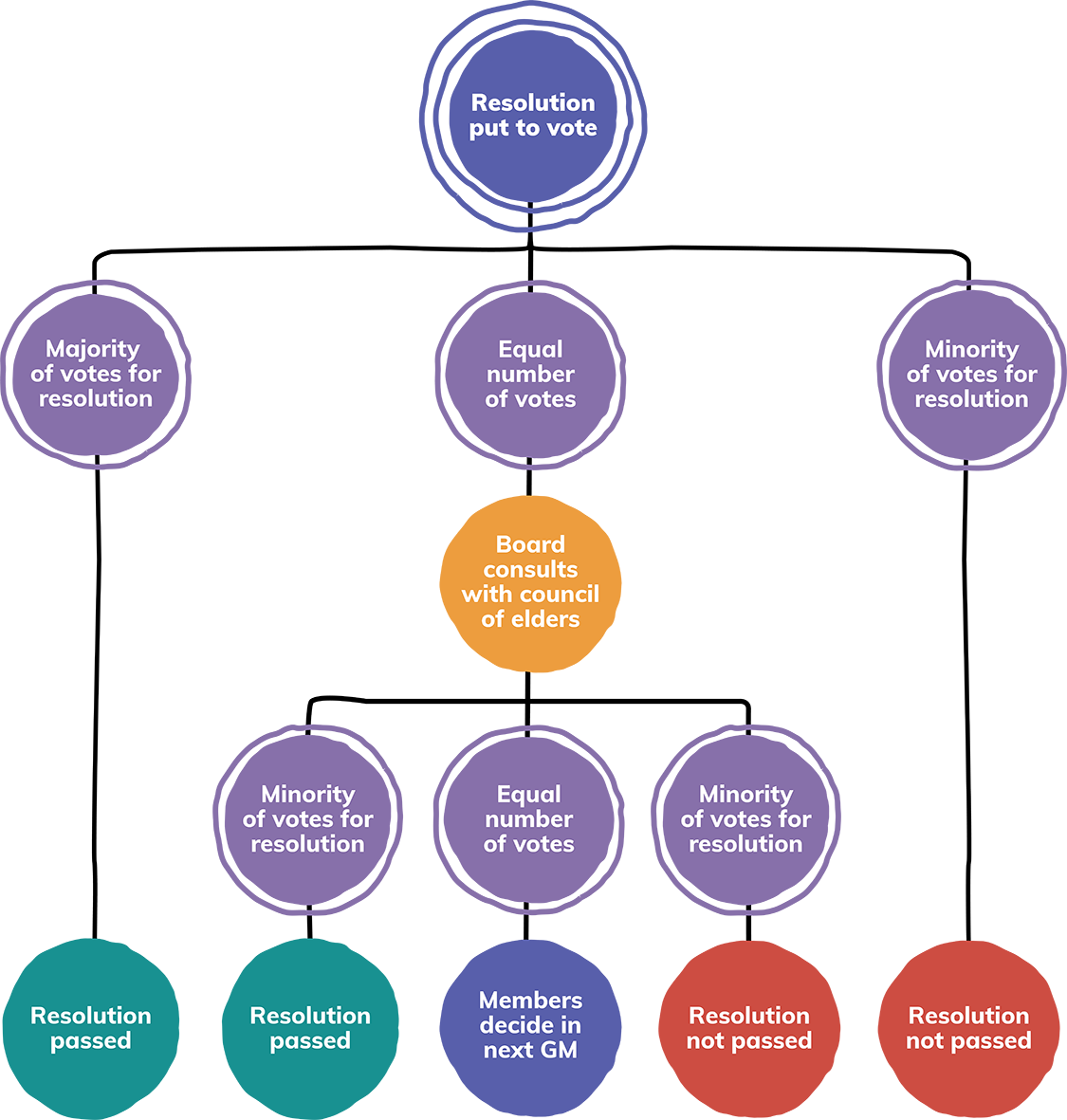Directors’ meetings
Quorum
Under section 212.20 of the Corporations (Aboriginal and Torres Strait Islander) Act 2006 (CATSI Act) there must be a majority quorum (or set number of people present) for director's meetings. The quorum must be present at all times during the meeting. This rule cannot be replaced. If a PBC believes that having a majority quorum is not suitable for their circumstances they can apply to the ORIC Registrar for an exemption to the rule.
A PBC can add extra quorum rules, however. For example, a PBC that represents different groups of native title holders where each group nominates their director/s might add an extra rule for a quorum that requires a minimum number of directors from each group to be present.
Voting
Section 212.25 of the CATSI Act is a replaceable rule requiring resolutions at directors meetings to be passed by the majority of directors.
Whilst most rule books included a rule that decisions in director's meetings are to be made by a majority show of hands, some rule books specify that decisions must be made in a different way. These included making decisions by consensus, considering the role of family and descent groups in decision making and using traditional methods of decision making and elders councils.
Example - Ngarluma Aboriginal Corporation RNTBC
Ngarluma’s rule book says that resolutions in directors’ meetings are to be made by majority vote. If there is an even vote the board must consult with the council of elders. If after considering the council of elders’ views, the directors’ and votes remain equal the question shall be decided by the members at the next general meeting.


